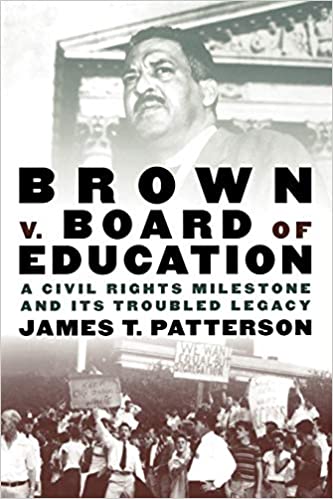
When Was Brown v Board of Education Decided?
Do you know when was Brown v Board of Education? If not, then you should. This case changed the way public schools are run, and it led to numerous landmark decisions. Here’s a quick guide to the case and its impact on American society. Hopefully, you’ll be able to apply what you learn to your own school. Also, be sure to read our related articles, such as Plessy v Ferguson and Thurgood Marshall v. Board of Education.
Brown v Board of Education
The Supreme Court’s decision in Brown v. Board of Education was a landmark decision in American history. In a 14-page ruling, the court found that separate schools for blacks and whites violated the Equal Protection Clause of the Fourteenth Amendment. Moreover, such segregated schools made black children feel inferior. As a result, the Supreme Court ordered states to desegregate their public schools in a deliberate manner.
Thurgood Marshall
If you are interested in history, you should learn more about the man who decided the fate of Brown v. Board of Education. Besides being a Supreme Court justice, Thurgood Marshall also served as the nation’s Solicitor General, representing the United States government before the Court. He was appointed to the Court by President Lyndon B. Johnson in 1967. He retired in 1991.
Plessy v Ferguson
Originally heard by the Supreme Court in 1952, Plessy v. Ferguson was a case against school segregation in the United States. Although majority of Justices wanted to overturn Plessy v. Ferguson, they could not agree on the cause of the case. That’s when the Court reheard the case in December 1953. Ultimately, the decision was not an overturn, but a landmark ruling.
Prince Edward County
In 1951, African American students in Prince Edward County, Virginia, filed a complaint, asserting their right to equal protection under the law. The Supreme Court ruled in favor of desegregation, and the cases were returned to lower courts for further consideration. In the interim, the county resisted desegregation efforts by refusing to collect school taxes. This forced public schools to close and a private school foundation was established to educate white students.
Court ruling
The landmark 1954 Supreme Court ruling in Brown v Board of Education challenged the desegregation of public schools in the United States. The case stemmed from five segregation cases that sparked the desegregation movement. The cases were Briggs v. Elliott (South Carolina), Davis v. County School Board of Prince Edward County (Virginia), Gebhart v. Belton (Delaware), and Bolling v. Sharpe (District of Columbia). These five cases had gathered enough evidence to support the Brown case. The Supreme Court ruled in favor of Brown in 1954.
Impact on civil rights movement
The landmark case of Brown v. Board of Education changed the way schools operated and the civil rights movement was born. The Supreme Court unanimously decided to strike down segregated school systems. The decision came after a long campaign to overturn the “separate but equal” doctrine. The campaign was begun by Charles Hamilton Houston in the 1930s and executed by Thurgood Marshall, who would go on to serve as the first Director-Counsel of the LDF.
Impact on future decisions on racial equality
Brown v. Board of Education was an important decision for racial equality in the United States. The Supreme Court determined that separate educational facilities are inherently unequal and that laws requiring desegregation violate the Equal Protection Clause of the Fourteenth Amendment. While the decision, which lasted 14 pages, did not detail the process of ending racial segregation in schools, it did order states to desegregate schools with deliberate speed.



